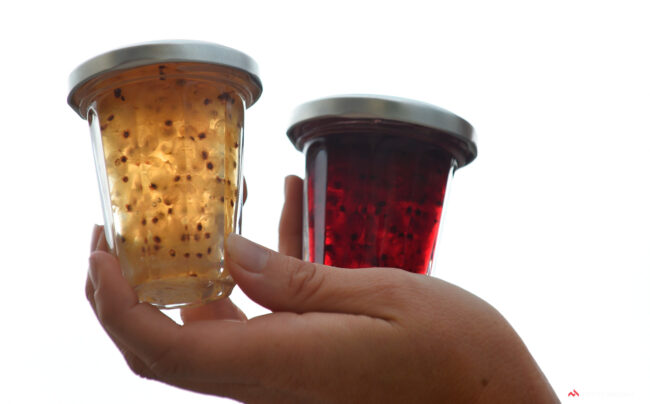HOSTED BY: https://fatmtnbike.com
TODAY'S RIDE

Hors Course stage 5: Very expensive jam
Today is the longest stage in the history of women’s cycling. In an almost uniquely easterly direction, the Tour de France Femmes avec Zwift peloton rides 175,6km. They sure will need some extra food on the bike for this day, so why not have breakfast with toast and a bit of jam.
Bar-Le-Duc is home to world-famous red currant jam and preserves.
The earliest known mention of Bar-le-Duc jam was in 1344 in a legal document. In this period of time, it was a widespread custom amongst the nobility and bourgeoisie to send jars of this jam as a thank-you present to judges when they had won a case.
Until the French Revolution, there were hundreds of jam makers in Bar-le-Duc, producing up to 100,000 kilos of this jam every year.
And there were some famous fans. Mary, Queen of Scots who was briefly Queen of France too in the 1500s loved the jam. Her mother was born in Bar so she knew it from her younger years. She said the jam was like “a ray of sun in a crystal jar.” Indeed, the weather of Bar-le-Duc is as sunny as that of Marbella when compared to the Scottish Highlands.
With the beheading of the social order – sometimes quite literally – the market for those expensive products collapsed overnight.
But it’s still produced and sold to this day in Bar-le-Duc. One of the most expensive ones is red currant jam. Normally you can’t make red currant jam without including the – too many people – unappetising seeds. Extracting the juice to make jelly is pretty simple, but a jam contains the skin and flesh of the fruits. Sometime in the 14th century, local monks had the idea of removing the seeds of red currants before making the jam. One by one, with a goose quill. That makes this a very labour-intensive jam.
A manufacturer called Maison Dutriez is one of the last ones to do it by hand. The sharp tip of the quill pierces the red currant and grabs the seeds. Depending on the currant, you may have between 6 or 20 seeds to remove.
He employs so-called épépineuses (seed-removers) who work at home for three weeks in June every year. They get paid by the weight of seedless red currants they bring back. Each batch of jam is cooked with the fruits from one épépineuse only, so M. Dutriez can tell her the next day how many seeds exactly she missed. An experienced épépineuse can do 1kg of deseeded fruits in 3 hours, whereas a student will struggle to make half of that in a day.
According to M. Dutriez, the jam he makes doesn’t perish and is a gift fit for a queen. A jar of 100 grams costs around 20 euros. The Maison Dutriez produces around 500 kilograms of this delicacy every year so dig in before its’s too late. Maybe the winner of the stage gets a gift basket with local goodies?
Read MoreBy: José Been
Title: Hors Course stage 5: Very expensive jam
Sourced From: cyclingtips.com/2022/07/hors-course-stage-5-very-expensive-jam/
Published Date: Thu, 28 Jul 2022 01:15:34 +0000
___________________






